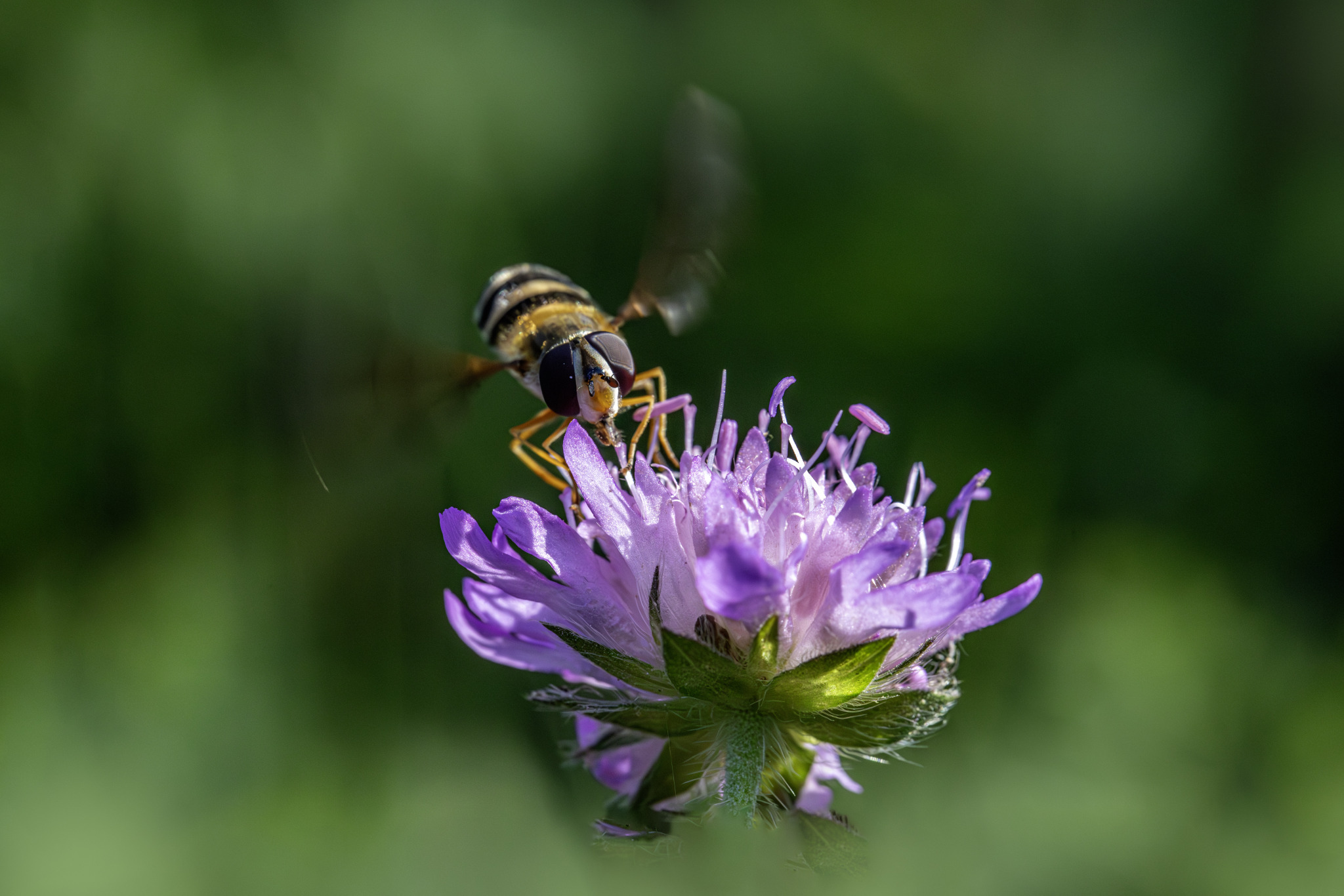The Hover Fly (Leucozona glaucia) is a species of hoverfly in the family Syrphidae. It is a relatively large and striking species, known for its distinctive coloration and hovering behavior, which allows it to feed on nectar and pollen from flowers.
Appearance
- Size: Leucozona glaucia is medium-sized for a hoverfly, with a body length of about 9 to 12 millimeters.
- Coloration: The species is recognizable by its dark, almost black body with broad, creamy white bands on the second and third segments of the abdomen. These white markings give it a distinctive appearance. The thorax is dark, often with a metallic green or blue sheen, while the face is mostly white with a slight yellowish tint.
- Wings: The wings are transparent but have a distinct brownish patch near the base.
Habitat
- Distribution: This hoverfly is found throughout much of Europe, especially in temperate regions, and is more common in woodlands, forest clearings, hedgerows, and areas with abundant flowering plants.
- Larval Habitat: The larvae of Leucozona glaucia are known to feed on aphids, making them beneficial for natural pest control in gardens and agricultural fields.
Behavior
- Flight Period: The hoverfly is typically active from late spring to early autumn, with a peak flight period from June to August.
- Feeding: Adults feed on nectar and pollen from various flowering plants, particularly favoring those with open, accessible flowers like umbellifers (e.g., cow parsley), thistles, and buttercups. The species is an important pollinator, helping fertilize many wild and garden plants.
- Hovering Ability: Like other hoverflies, Leucozona glaucia is known for its ability to hover in place, darting quickly from one flower to another. This behavior is not only essential for feeding but also for evading predators.
Ecological Importance
- Pollination: As a frequent flower visitor, Leucozona glaucia plays a significant role in pollinating both wild and cultivated plants.
- Pest Control: The larvae help control aphid populations, benefiting both natural ecosystems and agricultural settings by reducing the need for chemical pesticides.
Conservation Status
- Common and Widespread: Leucozona glaucia is considered common and widespread throughout its range. However, like many hoverflies, it can be affected by habitat loss, pesticide use, and changes in agricultural practices.
Leucozona glaucia is a visually distinctive and ecologically important species, serving as both a pollinator and a natural pest control agent in the environments where it thrives.
Visited 158 times, 22 visit(s) today
Views: 253
Subscribe to the newsletter:
